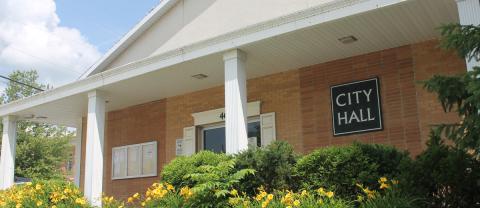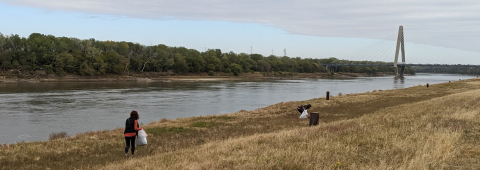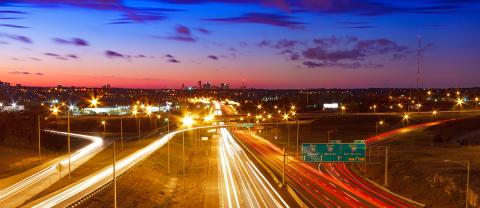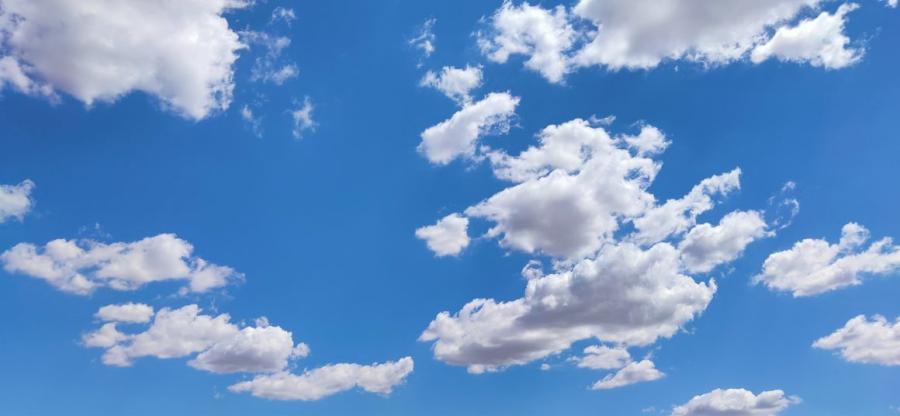Though chemically identical, there is “good ozone” — the kind that is naturally present in the stratosphere (as the Ozone Layer) and keeps Earth comfortable — and there is “bad ozone.” Bad ozone is human-made ozone that hangs out at ground level and is a hazard to public health. It can trigger breathing problems, especially in those who have asthma, emphysema, or other respiratory conditions.
Ozone isn’t directly emitted. It is developed through a chemical reaction between volatile organic compounds (VOCs), nitrogen oxides (NOx), heat and ultraviolet light from the sun. VOCs and NOx are emitted from cars, trucks, small businesses, utilities and large industry. Because ozone formation requires sunlight and heat, we tend to see higher concentrations in the warmer months of the year.
Ozone season runs from March 1 to Oct. 31. During the season, MARC’s Air Quality program works with state partners to track ozone pollution in the Kansas City region. MARC works with a local meteorology company to provide ozone forecasting called Skycast, which helps people stay “air aware” and take necessary measures to protect their health when ozone levels are elevated. When the daily Skycast shows ozone to be orange or red on the Air Quality Index, we issue an ozone alert to the public and ask the community to take actions that can lower our collective emissions. Such actions include riding the bus, working remotely or pumping gas later in the evening when there is less sunlight.
We do all of this to protect public health in accordance with the Clean Air Act. The EPA has a set of health-based National Ambient Air Quality Standards (NAAQS) for six main pollutants, including ozone. The Kansas City region violated the standard for ozone in the past when this was less stringent. Despite a tightened standard set in 2015, changes in energy generation and vehicle and fuel efficiency improvement helped us to maintain air quality in compliance with the Clean Air Act.
So, how did we do this year?
During the 2022 ozone season, MARC issued two ozone alerts. However, the eight-hour ozone concentrations did exceed the ozone standard, currently set at 70 part-per-billion (ppb), on six days during the season.
This occurred during particularly hot, dry days spanning from mid-July to early August. Despite these individual exceedances, this does not mean our region is in violation of the standard. The EPA uses a “design value” to determine an official exceedance, which is a 3-year rolling average of the fourth-highest 8-hour monitor reading.
Last year’s design value was 66 parts per billion. This year, our design value has increased to 68 parts per billion, just skirting the standard.
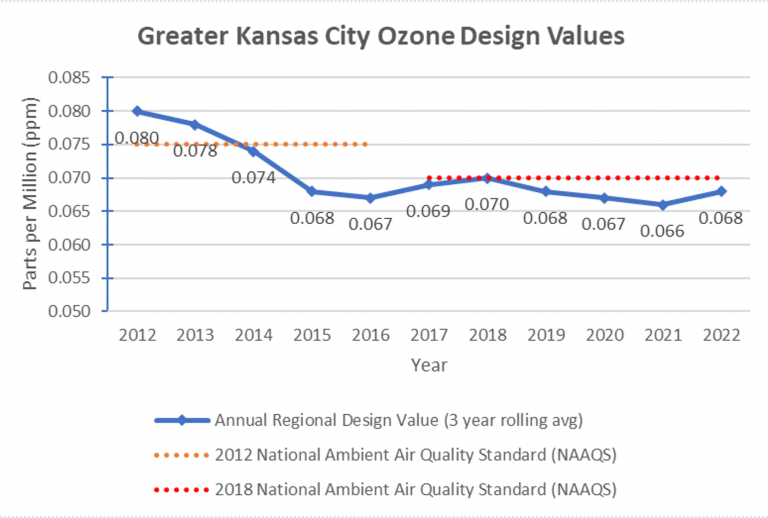
Weather plays a tremendous role in our air quality, but the changes we make in our behavior can make a difference on days when we teeter between a yellow and orange day, or an orange and red day. Before the next ozone season, what changes can you take on to help keep our air quality in check?
Visit AirQKC.org to learn more.


